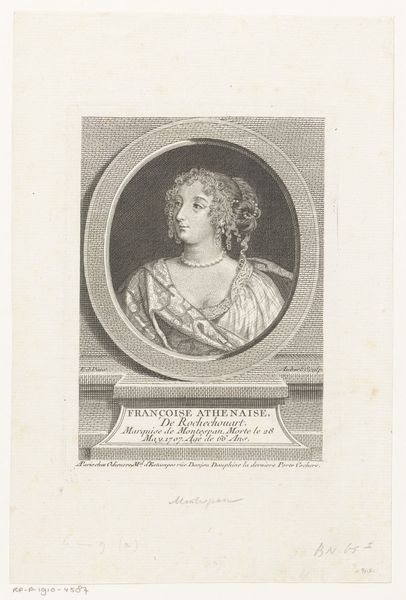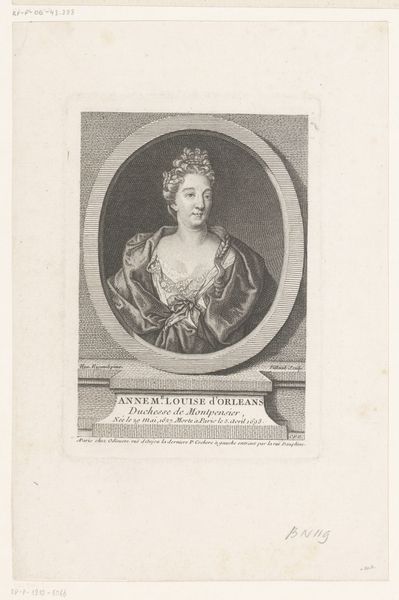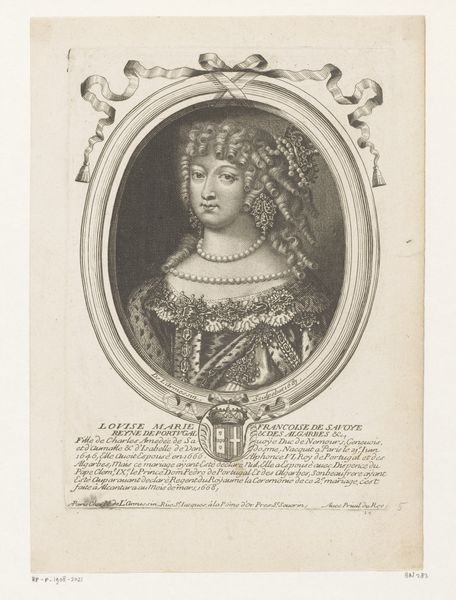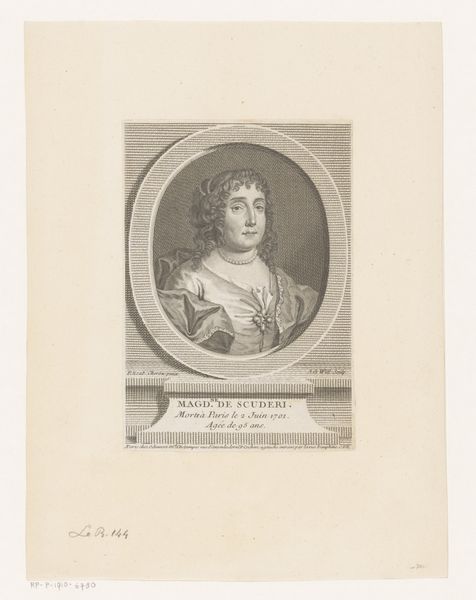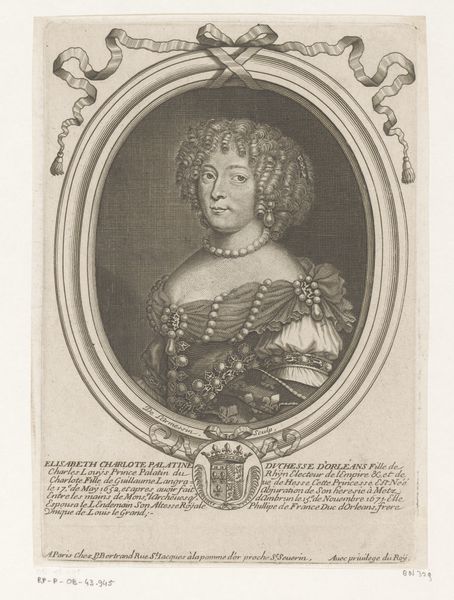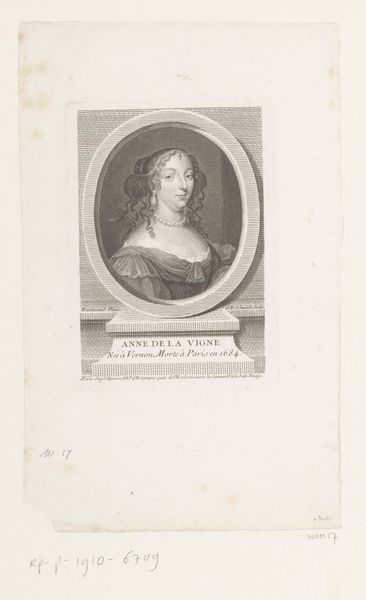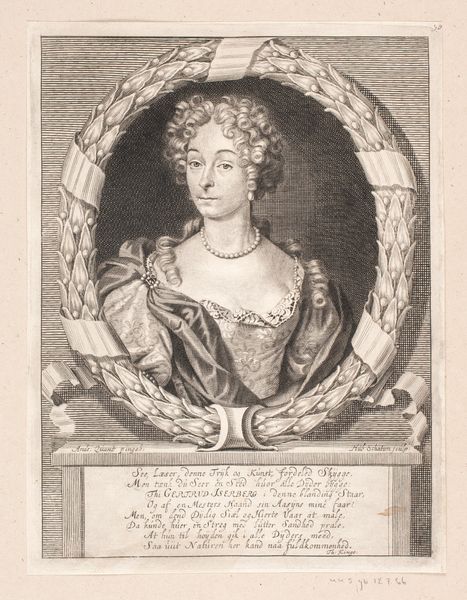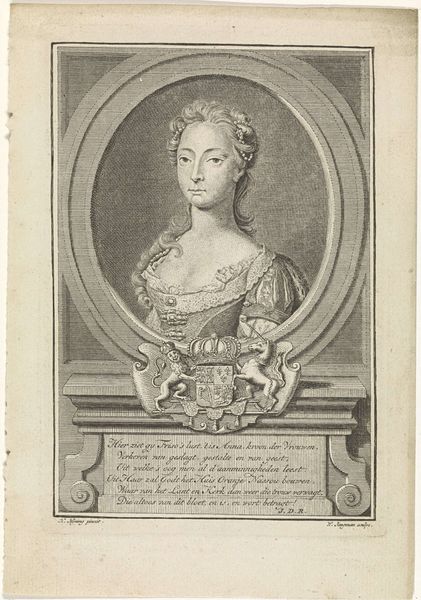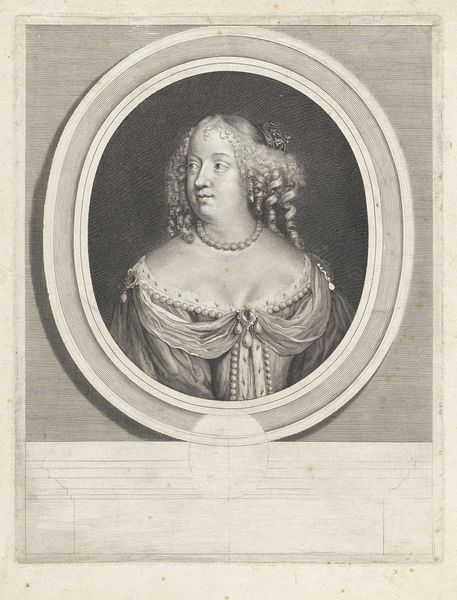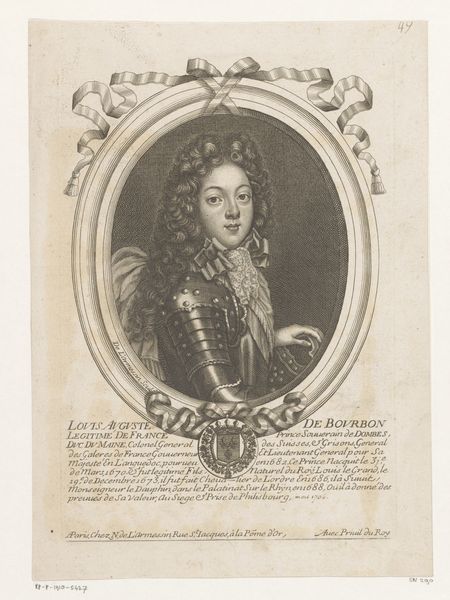
Dimensions: height 153 mm, width 113 mm
Copyright: Rijks Museum: Open Domain
Curator: What a striking portrait. This is "Portret van Marie Angélique de Scorailles", an engraving by Étienne Ficquet, dating back to 1755. It resides here at the Rijksmuseum. Editor: There's a certain coolness to it, wouldn't you say? An almost calculated elegance. The sharp lines and controlled shading feel very deliberate, very… staged. Curator: The technical skill is undeniable. The fine lines of the engraving capture the details of her lace collar and the voluminous curls of her hair with precision. Consider the symmetry of the oval frame, elegantly balanced upon the inscription panel below. Editor: And Marie Angélique herself? A woman defined by her position, frozen in time. This portrait says less about her as a person, and more about her status in the French court, one that demands a reading through the lens of gender and power dynamics. Curator: The Baroque influence is evident in the ornamentation and attention to detail. It conforms to the conventions of portraiture from the period—an emphasis on representing the sitter with grace and refinement. Editor: Right, but we have to remember who Marie Angélique was, and in relation to who! As mistress to Louis XIV, her image became a political tool. Reproducing this print meant to keep her presence alive. The idealisation is a strategic manoeuvre. It’s not simply about aesthetics. Curator: Indeed, by employing an established visual language, Ficquet reinforced a system of visual representation tied to those aristocratic values and aesthetic sensibilities. It speaks to the perpetuation of an image that met societal expectations. Editor: Ultimately, these works act as mirrors reflecting power structures. By analysing them, we uncover and question who has been historically allowed—and who continues to be allowed—to speak and be seen, and how. It's in those power dynamics that the real meaning of an artwork can be understood. Curator: Quite, quite. Viewing this portrait with contemporary eyes allows us to see not just the image itself, but the mechanisms and social scripts it embodies. Editor: Precisely. The artwork, viewed through its social and historical context, truly comes alive.
Comments
No comments
Be the first to comment and join the conversation on the ultimate creative platform.
